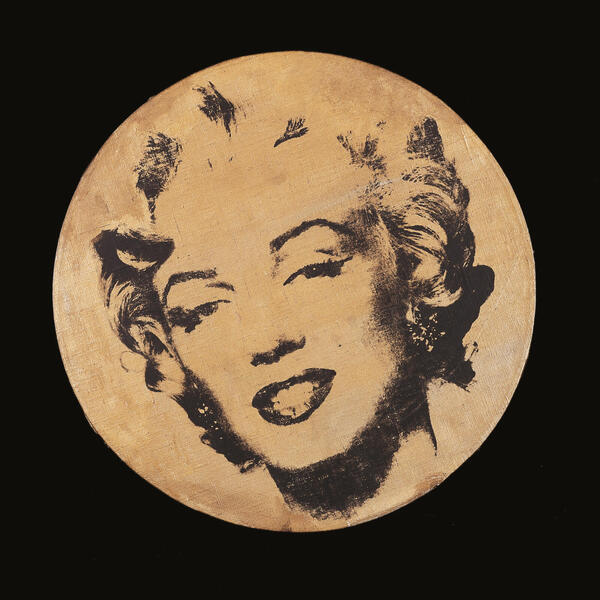Warhol, Gold Marilyn Monroe
Ink and silkscreen on canvas
18 5/16 in
In the 1960s, Sturtevant began reproducing the canonical works of her contemporaries, thereby testing the notions of originality and creativity in an era of a mass circulation of images. These are not simple copies, instead reflections on the very experience of art: “I make reproductions to confront, to trigger thoughts”,* she says. She rigorously learned the original techniques and then titled the works by contracting the artist’s name and the original title of the works. By toying with the myth of the artwork and the value of the name of the man who made them (the artists she copied are all men), Sturtevant was able to highlight the gender imbalance in New York’s art scene.
In Warhol, Gold Marilyn Monroe (1973) and in the series Warhol Diptych (1973-2004) that followed, Sturtevant focused on the cultural significance of the two star figures, and on the consequences of celebrity culture for artistic practice. Warhol himself addressed this topic when he appropriated the ultra-famous portrait of Marilyn Monroe to make a reproducible icon, its gold background recalling those used in Christian art. Sturtevant began working just a few weeks after Warhol launched that series. She met with the artist's assistants and even borrowed his silkscreen equipment. Through this novel approach, a kind of meta-appropriation, Sturtevant raised the major issue of autonomy in the work of art.
The Pinault Collection first showed this work in 2023 at the Couvent des Jacobins in Rennes, as part of the exhibition Forever Sixties
* Sturtevant. The Brutal Truth, cat. exp., Udo Kittelmann, Mario Kramer, MMK & Hatje Cantz, Francfort, 2004, p.36.

© Estate Sturtevant, Paris. Courtesy Galerie Thaddaeus Ropac
Sturtevant
Warhol, Gold Marilyn Monroe, 1973









